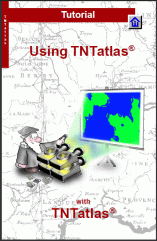
STEPS start TNTmips select Image / Resample and Reproject / Automatic. Because an orthoimage has map-like geometry, map-derived thematic data layers register more accurately with an orthoimage than with an unrectified image, and the spatial information you extract from an orthoimage is more accurate. Orthorectification is a procedure that removes these distortions, creating an orthoimage with features positioned as they would be in a planimetric map. Welcome to RPC Orthorectification Aerial and satellite images of land surfaces commonly contain spatial distortions due to terrain relief and off-vertical imaging geometry.

#MICROIMAGES TNTMIPS DOWNLOAD#
You can download an installation guide, sample data, and the latest version of TNTmips. The Web site is also your source for the newest Tutorial booklets on other topics. Smith, Ph.D., 24 February 2015 ©MicroImages, Inc., 2004-2015 You can print or read this booklet from MicroImages’ Web site. All the exercises can be completed in TNTmips Free using the sample geodata provided.
#MICROIMAGES TNTMIPS SOFTWARE LICENSE#
If you did not purchase the professional version (which requires a software license key) or TNTmips Basic, then TNTmips operates in TNTmips Free mode.
#MICROIMAGES TNTMIPS CODE#
All versions run exactly the same code from the TNT products DVD and have nearly the same features. TNTmips® License Levels TNTmips (the Map and Image Processing System)Ĭomes in three versions: the professional version of TNTmips (TNTmips Pro), the low-cost TNTmips Basic version, and the TNTmips Free version. Details of the process can be found in a variety of tutorial booklets, color plates, and Quick Guides, which are all available from MicroImages’ web site.

More Documentation This booklet is intended only as an introduction to orthorectifying satellite images. In particular, this booklet uses sample files in the RECTIFY directory. If you do not have access to a TNT products DVD, you can download the data from MicroImages’ web site. Sample Data The exercises in this booklet use sample data that is distributed Please consult those booklets for any review you need. You should also be familiar with the topics covered in the Georeferencing and Rectifying Images tutorial booklets. Those exercises introduce essential skills and basic techniques that are not covered again here.

In the Getting Started and Introduction to the Display Interface tutorial booklets. Prerequisite Skills This booklet assumes that you have completed the exercises This booklet introduces the concepts and procedures involved in rational polynomial orthorectification in TNTmips, including the use of the rational polynomial model in georeferencing the image prior to rectification. You can often improve the fit of a vendor’s rational polynomial model to a particular image by regeoreferencing the image using accurate 3D ground control points. This procedure also requires a digital elevation model. Orthorectification Using Rational Polynomialsīefore Getting Started You can orthorectify images that have a mathematical model of the image geometry in the form of a set of rational polynomial coefficients supplied by the image vendor or computed in the Georeference process.


 0 kommentar(er)
0 kommentar(er)
